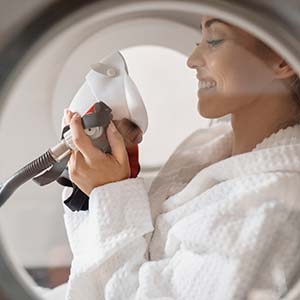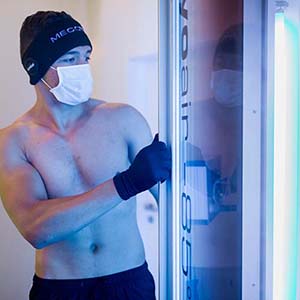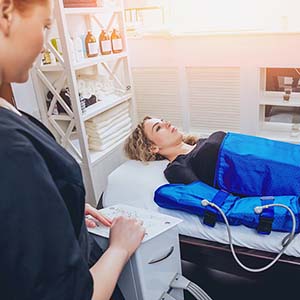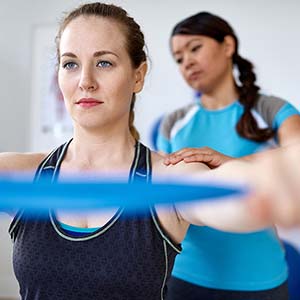Injury Recovery
Injury Recovery
how to recover from an injury
BUT how to recover as fast as possible.
After suffering an injury, most patients are eager to resume their normal daily activities, whether it’s returning to work or enjoying their favourite sports activity.
Pure Medicals holistic doctors share their medical perspectives, enabling the patient to achieve a faster recovery following sustaining an injury.
No matter the kind of injury. Early intervention and a well-defined recovery plan are essential to enable a quick return to regular daily life.
A large proportion of injuries are caused by participating in sports, injuries that could be reduced or even avoided. Before engaging in a sport, warming up with some cardio or stretching is recommended. Before the physical activity, soft tissues should be warmed up and stretched to reduce the risk of a sports injury.
Additionally, you can help prevent a sports injury by following these simple steps:
- Create a workout regimen that combines aerobic, strength training, and flexibility.
- Exercise every other day and switch up the muscles you work.
- After a workout or sporting event, cool down properly. Warm-ups should last twice as long as cool-downs.
- When participating in a sport, use appropriate equipment and attire, including suitable shoes.
- Learn the correct methods and techniques for the sport you play.
- When you are tired, rest. When in pain or tired, avoid exercising.
An acute soft tissue injury must be treated using the acronym RICE, which stands for Rest, Ice, Compression, and Elevation. Controlling the initial inflammation and kicking off the healing process early are the goals of early RICE therapy.
In the initial stages of an injury, there is pain along with swelling, redness, and warmth. This is helped by icing, and swelling is reduced by compression with a soft bandage. Even in the first 48 to 72 hours following an injury, elevating the wounded area is crucial because it lessens swelling brought on by gravity.
Pure Medicals injury recovery treatments enhance RICE therapy, however, if you are unable to visit a Pure Medical Clinic try these steps at home:
- Step 1, REST – Stop your activity as soon as you become injured, and try to get as much rest as you can for the first two days. For 24 to 48 hours, avoid putting any weight on the damaged area. Resting will also stop any further bruising.
- Step 2, ICE – For the first 24 to 48 hours after an injury, apply an ice pack covered with a thin, absorbent towel for 15 to 20 minutes every 2 to 3 hours. The cold is effective at reducing swelling and pain. A bag of frozen peas or corn will also work if you don’t have an ice pack.
- Step 3, Compression – To reduce swelling, bandage the afflicted area with an elastic medical bandage. While the wrapping should be snug, it shouldn’t be so tight that it restricts blood flow. If the skin underneath goes blue or becomes cold, numb, or tingly, loosen the bandage.
- Step 4, Elevation – Elevate the damaged body portion above your heart level. This lessens throbbing, aching, and swelling. Elevation can be achieved by using a pillow. When feasible, the damaged area should be maintained elevated.
Usually, minor sprains or tears improve after two weeks of rest. Consultation with a doctor should be requested if there has been no improvement.
The diagnosis will be confirmed by a complete clinical examination, and imaging tests like x-rays or scans, and these results will help focus the rehabilitation strategy to enable a quicker recovery with fewer consequences. Understanding the nature of the injury greatly aids in mental preparation for the recovery process.
If a damaged body part is used repeatedly after an injury, it will have a difficult time recovering. Even if it means taking a break from sports or regular functioning activities, pain is a reliable sign of an ongoing injury and should not be disregarded.
In order to fully promote healing, it is frequently best to immobilise the damaged area with a splint or brace and give it complete rest. Continued use of an injured body part may exacerbate an acute injury and turn it into a chronic one, increasing the likelihood that it will return and making treatment more challenging.
Once the initial inflammation has subsided, it’s crucial to move the joint as soon as possible to regain its complete range of motion. It is preferable to carry out this exercise programme under the guidance of a professional or physiotherapist who will make sure the necessary benchmarks are met. When joint motion is still restricted, returning to sport too soon can put you at risk for further harm.
Normal weight transfer from the foot to the knee, hip, and back is the definition of a normal walking pattern. Before resuming athletics, a person’s atypical walking pattern must be addressed because it may be caused by discomfort, weakness, or muscle imbalance.
Muscle wasting occurs frequently during periods of rest and inactivity, sometimes even in portions of the body that are not injured. Resistance exercise, which enhances balance, reflex control, and endurance in the wounded tissues, is a crucial part of muscular strengthening. This is frequently used in conjunction with endurance training and conditioning to get the damaged area ready for a quicker return to sports.
Numerous meals and supplements have been shown to hasten the body’s recovery from damage.
1. Foods high in protein – Foods high in protein, like meat and fish, help the body grow muscle.
2. Vitamin C – Citrus fruits and vitamin C-rich dark leafy greens aid in the synthesis of collagen, which repairs tissues and has anti-inflammatory qualities.
3. Omega-3 fatty acids – Omega-3 fatty acids, which are found in supplements and foods including salmon, sardines, chia seeds, walnuts, and soybeans, aid to reduce excessive inflammation and help speed up healing.
4. Vitamin D and foods high in calcium – Increased consumption of calcium-rich foods including milk, cheese, yoghurt, soft-boned fish, almonds, and dark leafy greens is crucial for treating bone injuries like fractures. Additionally, the body needs vitamin D, which comes from exposure to sunlight, in order to absorb calcium.
In conclusion, monitoring the early healing process of the affected area and having a customised rehabilitation plan are necessary for an early recovery from an injury. The recovery time it takes from an injury can be drastically reduced by consulting Pure Medical for advice and treatment whilst carefully not to exacerbate the injury.







